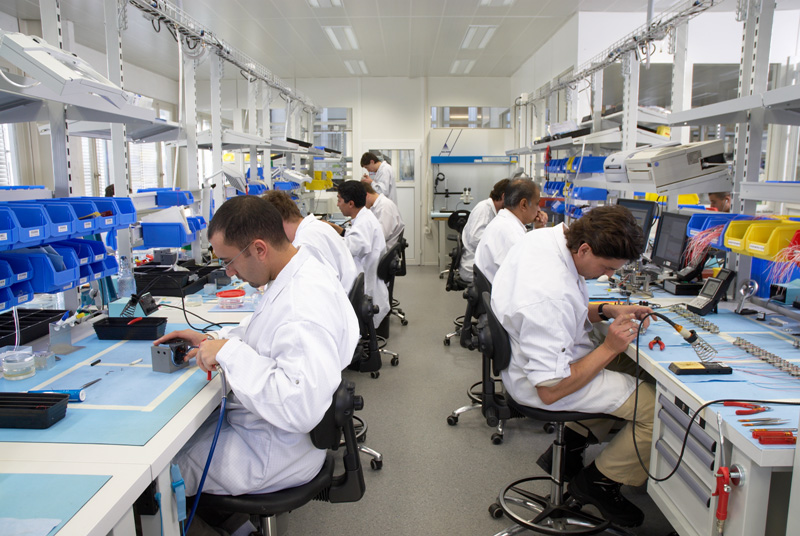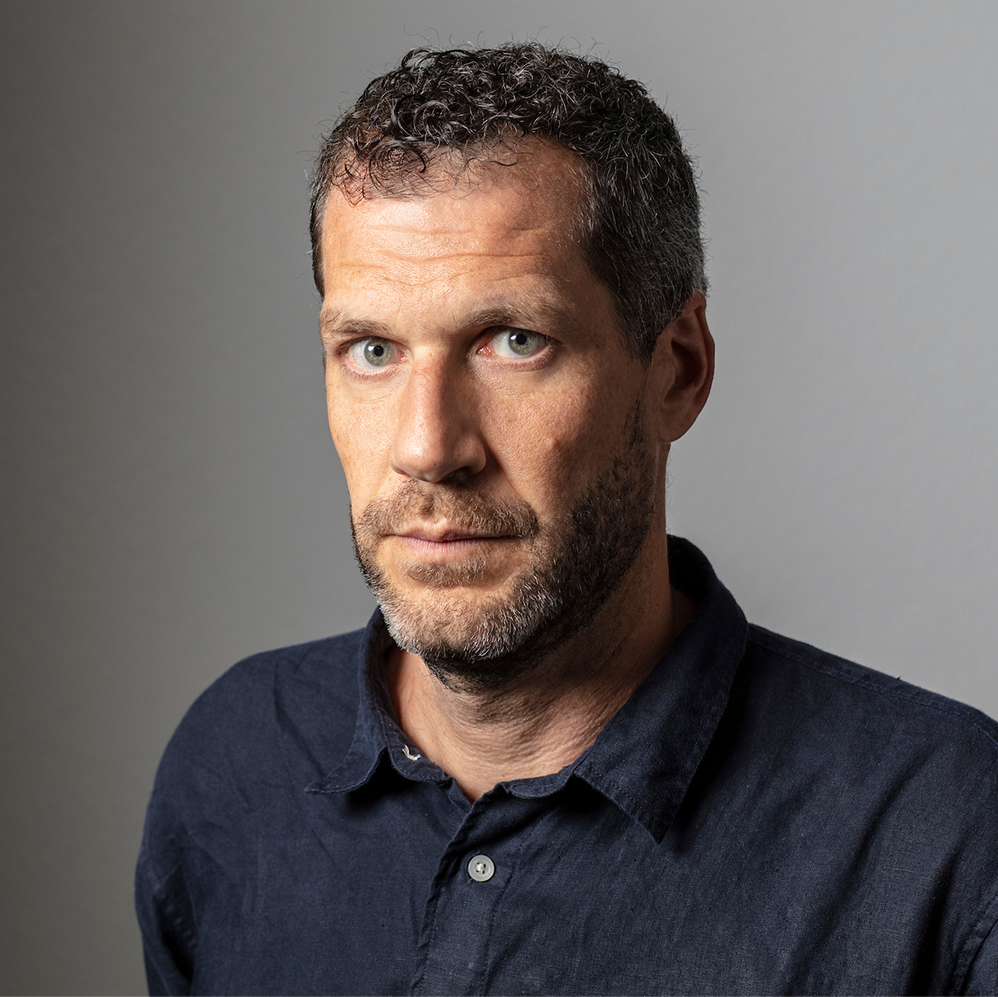
Economic slump helps firms innovate

The impact of the strong Swiss franc has driven the government to offer companies a pot of gold to boost innovation. One firm is hoping it will also lead to profits.
Vaud-based precision engineering company Tesa is one of a few hundred Swiss small and medium-sized businesses (SMEs) to be awarded part of a SFr100 million ($107 million) economic stimulus fund.
In the Lausanne suburb of Renens, an icy wind is blowing around the apartment blocks and over the roof of the Tesa factory.
Inside, the factory’s 400 employees, engineers, mechanics and machine operators are all hard at work on their specific task, but share a common goal: to produce a wide range of “Swiss made” high precision measuring instruments for use in everything from cars and aeronautics to the watchmaking industry.
It may look like a well-oiled operation but Tesa has just emerged from a few difficult months. A management proposal to increase working times without raising salaries was rejected in the autumn by employees, creating tensions between unions and bosses.
“The strong franc has put us under pressure and created a lot of uncertainty among the staff, but there were never plans to relocate,” Floriane Jacquemet, Tesa spokesman, told swissinfo.ch.
“Instead we will invest SFr3.5 million in modernising our plant. This proves that our parent company, the Swedish group Hexagon, believes in the sustainability of the site.”
Tesa relies heavily – over 80 per cent – on foreign markets in what is an extremely competitive sector, with a dozen important rivals worldwide. It is being forced to make significant capital gains to offset high wages and narrow profit margins resulting from the unfavourable exchange rate. The Swiss franc has become a safe haven currency amid euro and dollar woes.
“We constantly have to innovate if we are to continue producing in Switzerland,” said Benjamin Vullioud, who heads a Tesa research and development department of around 30 engineers.
Oversubscribed
Like many other SMEs, Tesa applied for some of the SFr100 million in government grants that was distributed in December for technological innovation projects as part of various economic stimulus measures.
The fund was oversubscribed, with 1,000 applications totalling SFr530 million sent to the Commission for Technology and Innovation, a government body aiming to support the transfer of knowledge and technologies between higher education and industry.
Although around 80 per cent of requests were turned down, Tesa managed to have two projects approved.
Several hundred thousand francs has been allocated to a research institute, the Swiss Centre for Electronics and Microtechnology (CSEM) in Neuchâtel, for the development of a revolutionary measuring technique which would permit Tesa to get one up on its competitors.
“We have developed a method of measuring position movement with unprecedented accuracy,” said Edo Franzi, project manager at CSEM. “Tesa had been looking to integrate this technology into its machines. Thanks to the government aid we have been able to put a team of five or six researchers on the project.”
As it is not yet patented, the new technology is top secret but Vullioud hopes it will allow Tesa to increase its turnover “significantly”. The pressure is on though, with the manufacturer wanting a prototype by the end of the year.
“This project could quickly be commercialised but there are risks, notably that the technology will not be miniaturised enough. That’s why it received the backing of the Commission for Technology and Innovation,” said Franzi.
If it succeeds, the project could profit other companies as well as Tesa. “When we develop a technology for a customer, at the same time we solve a series of problems for other manufacturers. The customer owns the results in its particular field but these results could be used in other areas,” said Franzi.
Innovation boom
Better cooperation between universities, research institutes and industry is a factor contributing to the success of the Swiss economy in these difficult times. And even if in innovation terms Switzerland is still far ahead of European Union member countries, that doesn’t mean it can rest on its laurels.
Parliamentarians have understood this well, with both the House of Representatives and the Senate adopting in turn a motion calling on the cabinet to fish out those projects that didn’t make the cut in the first round of funding in December.
“We shouldn’t miss out on supporting any deserving projects that have potential,” said Christian Democrat parliamentarian Anne Seydoux-Christe.
But she noted: “It’s not about subsidising businesses forever, but about giving an economic boost to innovation.” At the same time, the financing of these new projects “should not be done to the detriment of other areas in training”, she said.
For CSEM boss Mario El-Khoury, the return on investments has largely justified providing a SFr100 million fund.
“These measures allow us to maintain and create numerous high added value jobs in Switzerland. And the effects will be felt well after the crisis. This ‘virtuous circle’ could lead to a sort of baby boom in innovation in Switzerland,” said El-Khoury.
The strong Swiss franc, like gold, is generally considered a safe haven currency by investors. This was especially the case during the recent economic downturn. Between August 2008 and August 2011, the franc rose by 44% against the euro.
The rising franc has impacted particularly on the export and tourism sectors, which caused the Swiss National Bank in September 2011 to set a minimum exchange rate of SFr1.20 to the euro.
In parallel, the Swiss cabinet has also set out to counter the effects of the franc. The first measures, announced in February 2011, focused on promoting tourism and technology and innovation and insurance against the risks of exporting.
In August the government announced a plan for a SFr880 million package of measures, the majority of which (SFr500 million) would be spent on compensating for partial unemployment.
Of the Swiss government’s economic stimulus packages, SFr100 million was set aside for innovation. It aims to help companies to quickly carry out innovation projects in collaboration with recognised research institutes.
Over two months the Commission for Technology and Innovation received 1,064 applications for funds totaling SFr530 million. The commission chose 246 projects. Over 500 projects could not even be assessed because of the sheer volume of requests, and the Commission has told applicants to reapply for its regular funding in 2012.
To be chosen, projects had to have been deferred by a company due to smaller margins linked to the rise of the Swiss franc. They also had to get off the ground quickly. Overall, 33% projects accepted were in engineering, while 28% were in life sciences, 28% in micro and nanotechnology and 16% per in IT and services.
“The cabinet and parliament voluntarily limited the amount and duration of this project in order to strengthen the competitiveness of export activities with a single injection for innovation,” wrote the Commission in a statement.
The Swiss Centre for Electronics and Microtechnology, one of the Commission’s partners, is a research institute entirely dedicated to the transfer of technologies to industry. It has supported 25 different companies as part of the stimulus programme.
(Translated from French by Jessica Dacey)

In compliance with the JTI standards
More: SWI swissinfo.ch certified by the Journalism Trust Initiative


















![The four-metre-long painting "Sonntag der Bergbauern" [Sunday of the Mountain Farmers, 1923-24/26] had to be removed by a crane from the German Chancellery in Berlin for the exhibition in Bern.](https://www.swissinfo.ch/content/wp-content/uploads/sites/13/2025/12/01_Pressebild_KirchnerxKirchner.jpg?ver=1ea8acae)











You can find an overview of ongoing debates with our journalists here . Please join us!
If you want to start a conversation about a topic raised in this article or want to report factual errors, email us at english@swissinfo.ch.